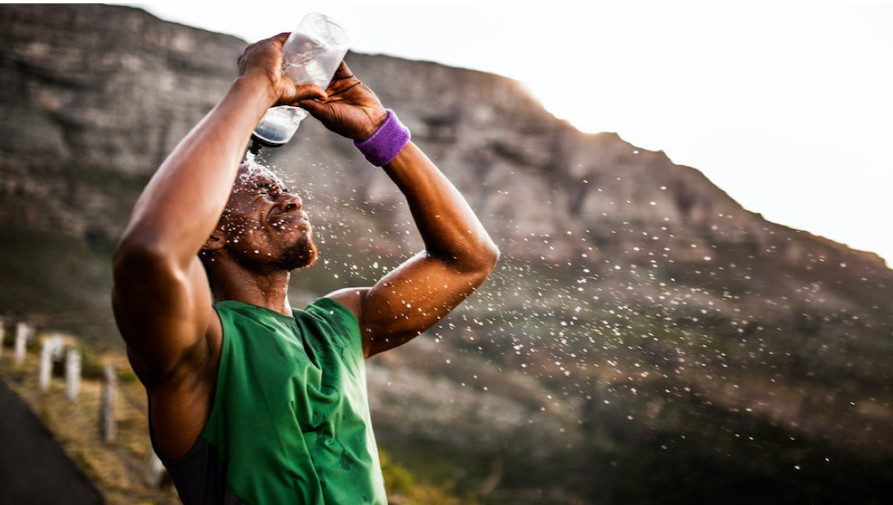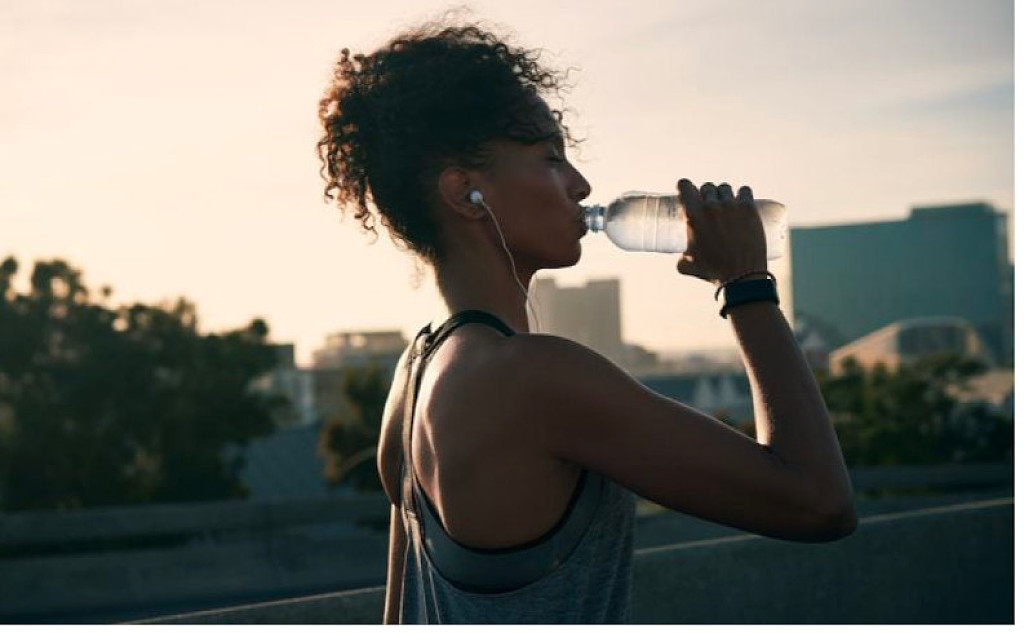Running News Daily
Running News Daily is edited by Bob Anderson. Send your news items to bob@mybestruns.com Advertising opportunities available. Train the Kenyan Way at KATA Kenya and Portugal owned and operated by Bob Anderson. Be sure to catch our movie A Long Run the movie KATA Running Camps and KATA Potato Farms - 31 now open in Kenya! https://kata.ke/
Index to Daily Posts · Sign Up For Updates · Run The World Feed
The Latest, Best, and Most Scientific Hydration Strategies for Runners
Summer is just around the corner, race calendars are filling back up, and interest in ultra-marathon and ultra trail races is booming. In other words, it's time to think about optimal hydration practices again. And to get everything right this time - once and for all.
Fortunately, Larry Armstrong, PhD, is here to serve as our guide. Armstrong has ranked among the world experts in endurance hydration for 40 years, and has just written a new summary paper titled "Rehydration During Endurance Exercise: Challenges, Research, Options, Methods."

A lifetime runner himself, Armstrong understands that marathoners want practical hydration advice, and not just scientific gobbledygook. We've had enough of that through the decades, especially as it has changed in ways both subtle and substantial.
Drink Some, Not Too Much
Don't feel bad if you're confused about the best hydration strategies before a race. So are a lot of other runners. Armstrong's new paper clarifies the muddy issues, delivering the latest and most evidence-based data.
Temperature has a major impact on sweat rate, which nearly doubles between a marathon run at 45 degrees Fahrenheit and one run at 68. Additionally, the faster you run, the more you sweat per hour. (Although a 2:30 marathoner and a 5-hour marathoner will sweat about the same total amount over 26.2 miles.) Typically, the more you weigh, the higher your sweat rate. Genetics plays a role as well, partially determining your relative sweat rate and the amount of salt in your sweat.
A new threat appeared in the mid-1980s with the first reports of marathon runners who drank too much, leading to hyponatremia (low salt level in the blood). Severe hyponatremia, while rare among runners, can lead to seizures and even death.
It has generally been observed most often in women runners (possibly because of their small body size), in runners who exercise more than 4 hours at a time, and in runners with inherent high sweat rates and high sodium content in their sweat. Cases of hyponatremia seem to have dropped in the last decade, as runners have realized they should not drink as much as possible.
To avoid both dehydration and hyponatremia, marathoners need to find a smart middle ground. You don't want to drink too little, and you definitely don't want to drink too much. There's the challenge we all face.
The goal, which some runners have been slow to accept, is to plan for and accept modest dehydration. It's not a personal hygiene failing like BO or bad breath; it's the smartest way to run. Here's a little jingle I just invented, keep it in mind: "1-2-3, it's all for free."
In other words, you can lose up to 3% of your body weight in marathons, and it won't cause any harm. In fact, you might save time, as you walk and slurp less at fluid stations.
Based on Larry Armstrong's hydration guidelines, here are and nine specific tips and five ways to plan for your race (two of which are bad ideas).
9 Specific Hydration tips
Hydration Tip 1: Experiment with any and all hydration methods during training, and before using them in competition. Try to train in the conditions you will face on race day.
Hydration Tip 2: Measure body weight before and after an endurance run to get an estimate of your water loss per hour. Use this to inform your race-day hydration strategy.
Hydration Tip 3: During exercise, consume fluids at a rate less than 700mL/hr (that's about 24 ounces). Several exercise science groups and marathon medical director groups suggest a range of 400 to 800mL/hr (13 to 27 ounces).
Hydration Tip 4: Remember this key fact: Modest dehydration up to 3% is okay. In fact, it's commonplace and expected. It's not dangerous, and not likely to impair your performance. Don't try to replace all the sweat you lose.
Hydration Tip 5: If you lose more than 4% of body weight, consider a medical consult to see if you can figure out what's going on.
Hydration Tip 6: Be alert for stomach sloshing, bloating, nausea, or other perceptual cues of excessive drinking. If you experience any of these, limit your fluid intake.
Hydration Tip 7: Do not allow yourself to gain weight during endurance exercise. Weight gain puts you at increased risk of hyponatremia.
Hydration Tip 8: After training and racing in high heat, especially on consecutive days, look for deposits of white salt on your shirt or shorts. These could indicate that you are a heavy salt sweater, and are possibly becoming salt depleted, which could increase the risk of hyponatremia. In this situation, consider adding salty foods to your diet.
Hydration Tip 9: Do not believe that consuming salt and salty foods during an event will allow you to over-drink. This has been proven wrong, and could lead to a false sense of security that might predispose you to hyponatremia. Salts consumed while running will have little to no effect on possible hyponatremia.
5 Pre-Race Hydration Strategies
Do:
1) Drink only after you become thirsty: This approach is believed to minimize the risk of hyponatremia, and also prevent excessive dehydration.
2) Drink when you feel like it (ad libitum): This approach is slightly different than the first, though some draw no distinction. The first advocates paying attention to your thirst. The second: Drink when fluids are available and you feel like it.
3) Drink according to a pre-determined plan: This approach assumes that you have measured your sweat rate prior to the upcoming event. Thus, this strategy is individualized to your weight, pace, the expected weather, and your individual sweat-rate. It should optimize your performance while limiting the risk of hyponatremia. Bingo!
Don't:
4) Drink nothing: This strategy is not recommended by any sports medicine or sports nutrition group for exercise lasting more than 30 minutes.
5) Drink as much as you can: This strategy is not recommended by anyone, yet still apparently followed by as many as 9% of all runners. It could lead to hyponatremia, and will not optimize performance.
Bottom Line: Pick strategy 3. If you haven't done your homework, you can fall back on 1 or 2. Don't follow 4 or 5.
by Trail Runner Magazine
Login to leave a comment




